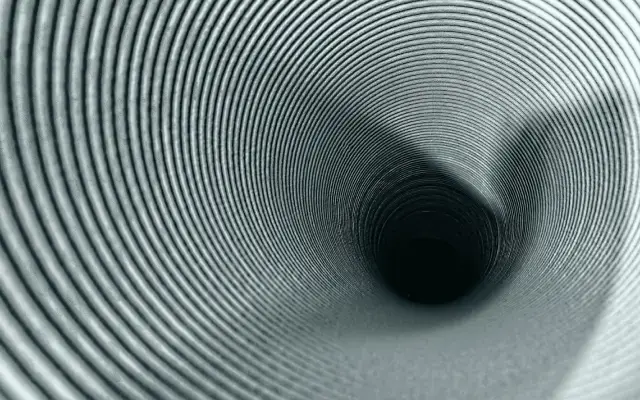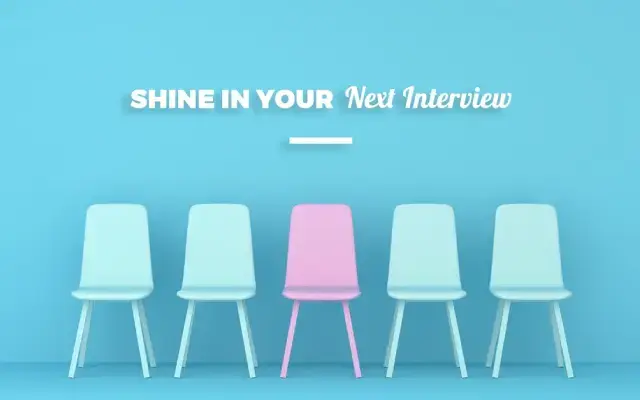Have you ever been headhunted by a hiring manager? Well, this recruitment method is actually gaining popularity worldwide as hiring managers start to rely heavily on social media platforms such as LinkedIn to identify candidates who are a good fit and open to new opportunities. But when it comes to the interview stage, you should be aware of the various interviewing styles hiring managers are starting to use.
From the STAR interview method to logical thinking and puzzles, in this article, we’re going to discuss the different types of interviewing styles being used today, smart interview techniques used by headhunters to filter through candidates, and how you can truly impress. So, whether you’ve been invited to have a coffee and casual chat with a headhunter, a virtual interview with a hiring manager, or a phone interview with a global brand, grab a coffee and let’s get into it!
What Are The 7 Different Types Of Interviewing Styles?
First, let’s kick things off with the different types of interviews being used by hiring managers both in the US and overseas.
1: Traditional Interview Technique
If you’re an experienced professional with a wealth of experience under your belt, you’ve probably experienced more than one traditional interview technique. This is where you’ll sit face to face with the recruiter, headhunter or hiring manager and go through a series of standard interview questions that helps you to share your skills and experience with the interviewer. Traditional interviews are generally formal and last anywhere from 15 minutes up to an hour.
2: Phone Interview
You might be asked to have a phone interview as a screening process. It tends to be used to quickly filter out any candidates that don’t have the right level of experience or don’t give a positive first impression. This helps to save hiring managers precious time and can be a great way to speak to candidates who aren’t local or able to attend in-person interviews.
3: Video Interview Technique
During the COVID-19 pandemic, virtual video interviews gained momentum on a global scale. And as we emerge into a post-pandemic era, it still remains one of the most popular interview techniques to use. A step up from a phone interview, a video interview allows the hiring manager or headhunter to see the candidate, observe their body language and facial cues and gain a better understanding of their personality too.
4: Group Interviewing Style
In a group interview, multiple candidates are interviewed at the same time in order to analyze a person’s leadership skills, teamwork, and confidence. If you’ve been invited to a group interview, you’ll need to really stand out, but for all the right reasons. So make sure you speak up and voice your opinions but in a diplomatic and friendly way.
5: Pitching & Challenges
Pitching and challenges, on the other hand, are used to evaluate a candidate's creativity, problem-solving skills, and communication skills. In this type of interview, the candidate is given a task to complete within a certain timeframe or a deadline, such as presenting a sales pitch or solving a problem. Generally speaking, it’s used for roles that require these skills on a daily basis.
6: Panel Interview
A panel interview is a type of interview where the candidate is interviewed by multiple interviewers at the same time. This type of interview is used to get a more comprehensive assessment of the candidate's skills and experience.
7: Behavioral Interview
In a behavioral interview, the interviewer will ask the candidate questions about how they have handled specific situations in the past that are directly or, in some cases, indirectly related to the role in question. This type of interview is used to evaluate a candidate's problem-solving skills, communication skills, and decision-making abilities.
What Are The Top 3 Types Of Interviews?
Now let’s talk about the different types of interviews you might be asked to attend and how you should prepare for each one.
Virtual Interviews
As we mentioned above, more hiring managers are using virtual interviews as they’re more convenient and cost-effective than asking you to come into the office. Plus, it also allows headhunters and hiring managers to interview candidates that may be abroad or too far from the office to take part in a traditional in-person interview process. So, rather than restrict the role to local talent, hiring managers can cast their net further afield and source top talent from almost anywhere in the world!
If you want to ace a virtual interview, you should spend time checking your video and audio equipment before the interview takes place. There is nothing worse than struggling with software when trying to appear professional, organized and collected. You should also have a pen and paper handy to write down any key information during the call and have some questions to ask the interviewer at the end of the call.
Casual Coffee Interviews
Never underestimate the power of a casual coffee interview. In fact, this is often used by headhunters to catch candidates off-guard and to gain a better understanding of someone’s character and values. Always keep in mind that this is an informal interview, so while you can be more relaxed and casual and bring your personality to the table, keep topics professional and positive. Refrain from talking about your personal life or complaining about your current situation or the business you work for. Instead, focus on learning more about the opportunities the hiring manager has and how they could help you advance in your career and gain more skills and experience.
Test & Challenge-Based Interviewing Styles
Interviews that consist of tests and other challenges are also gaining popularity, particularly for positions in the STEM fields. During these interviews, a candidate's logical reasoning, problem-solving ability, and creative thinking are evaluated for possible employment. These frequently entail the candidate working through a series of puzzles or riddles. These tend to be reserved for roles within the technology sector and digital innovation, although they are starting to appear in interviews for opportunities within business development and marketing too.
What Are The Best 5 Interview Techniques?
Let’s say you are preparing for an interview in the next couple of days. What can you do to optimize your chances of being hired?
Dress For The Role You Want
Physical appearance is critical whether you’re on a video call, you’re facing a panel, or you are meeting for a coffee with a headhunter. Dress for the role you want, not your current position. So, if you’re hoping to become a manager, you’ll need to appear sophisticated, well-dressed, and presentable. If you know the company is more laid-back and creative, dress in a smart yet creative way to demonstrate to the hiring manager that you’d be an excellent company fit.
Act As Though You’ve Already Been Hired
Acting as though you've already been hired is a psychological trick that can help you not only become more relaxed during an interview but also help the recruiter to think of you as already being part of the company. Use questions such as, ‘When I join the company, what does the onboarding process look like?’ This shows that you are so confident that you have the skills and experience necessary that you’ve already mentally committed to the idea of being hired and are thinking about the next steps of joining the company. It also demonstrates your eagerness to learn and integrate into the company's culture, which can leave a positive impression on the recruiter.
Sell Yourself, Your Personality, Skills & Experience
Selling yourself involves highlighting your skills, experience, and personality in a way that demonstrates why you are the best candidate for the job. It's essential to be clear and concise when describing your strengths and accomplishments, so have this prepared in advance so that you communicate it effortlessly.
Be A Breath Of Fresh Air
Being a breath of fresh air means bringing something unique and positive to the interview. This can be done by expressing your passion for the role or by sharing an interesting or inspiring story. Perhaps the hiring manager has been carrying out interviews all day. In this case, appearing light, positive and energetic can help you stand out.
End With Clear Next Steps
Ending the interview with clear next steps shows that you are organized and prepared. It's essential to thank the interviewer for their time and to ask about the next steps in the hiring process.
Interviewing Styles Of Headhunters and Hiring Managers?
The STAR Interview Method
The Strategic Task Analysis and Ranking, also known as the STAR Interview Method, is a well-known interviewing style that is utilized by headhunters and recruiting managers. It involves asking the candidate to elaborate on a particular circumstance, job duty, course of action, and outcome connected to their previous experience. The candidate's problem-solving abilities and their capacity for decision-making are both evaluated through the use of this method. ² It’s also similar to the situational interviewing style, which involves asking the candidate to describe how they would handle a specific situation to evaluate critical thinking and decision-making skills.
Stress Interview Technique
If you feel as though you’ve been put under immense pressure during an interview process, then the hiring manager may be using the stress interview technique. This interviewing style is used to test a person’s ability to react under pressure, which could be key to being successful in the role. Although it might feel as though you’re being interrogated, it can quickly assess whether you’re right for the opportunity and will feel comfortable working in such a high-stress environment long-term.
Behavioral Interview Technique
The behavioral interviewing style involves asking the candidate to describe how they have handled specific situations in the past. This method is used to evaluate a candidate's problem-solving skills, communication skills, and decision-making abilities. Use storytelling to impress hiring managers and showcase your ability to gain and maintain someone’s attention. This can often be an essential skill within sales and marketing roles.
Final Thoughts
Interviews are still a critical part of the digital recruitment process, and it's essential to choose the right type of interview and interview style to evaluate a candidate's skills, experience, and cultural fit. By understanding the different types of interviewing styles and the best interview techniques as a prospect, you can better prepare for an upcoming interview and increase your chances of success!




